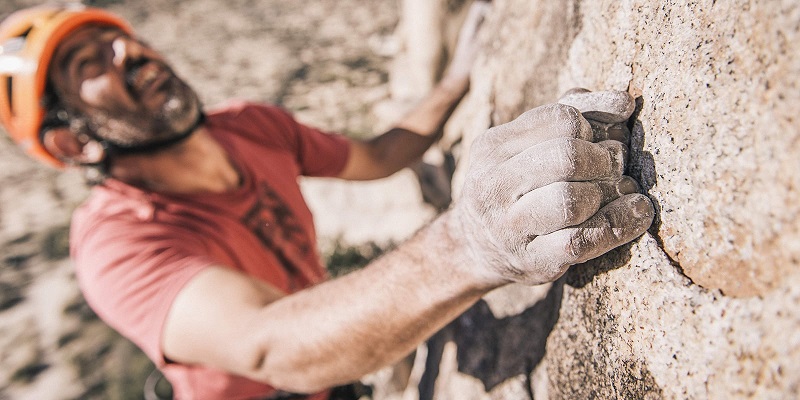Look for scaling holds online for climbing gyms and you also find page after page of vibrant and odd shapes. Due to their inspirations, which blend before you your hunt is on a crag.
Learning how to identify each one and the names of holds is essential to your advancement for a climber. That summary is provided by this report and, even more importantly, explains how to utilize each grip.
Two methods help you get the maximum from any grip:
- Squeeze as difficult as you want to remain on a grip. Squeezing as difficult as possible exhausts forearms prematurely and you’re going to feel “pumped” because a lot of blood flow is led to arms whenever they are tensed.
- Concentrate on the direction that you would like to pull. To acquire the most powerful and simplest grip, pull vertical to the grip. Line up your own weight and you’re going to be less inclined to come off the stone.
Types of Climbing Holds
Jug/Bucket
Jugs are large, open retains you could get your hand. Since they are really simple to grip jugs are people’s favored and they give a superb rest.
Edge/Ledge
Edges will be the most typical. They may be tiny dime borders (barely wide enough to get the foot of your shoe), long cuts from the wall (area for both hands) or enormous ledges (large enough to enhance your entire body on at the peak of a scale).
Crimp
There is A crimp a border that large enough. You can find a better angle by getting your own body weight nearer to the wall and you’re going to get a better prospect of staying attached to it.
You can maintain a crimp in 2 manners:
- Full crimp or shut crimp: you’ve got sharp angles on your knuckles along with your thumb is tucked on your palms for additional power. This place is more stressful on finger joints, so be mindful.
- Broad clasp: Your palms are on the border and the remainder of your hands is draped on the wall. This grip puts less strain therefore if you don’t want the ability of a crimp it ought to be your clasp.
Pinch
A pinch is precisely what it seems like — your palms on the opposite and any bit of stone which you may pinch together with your hands on one side. Since so much power is added by your thumb, use it any time you may get it.
Sloper
Slopers are bulges with no angle to your hands to grip. They can be tricky, but Decent method will have paths that are slopey climbing in no time:
- Body posture is vital: Maintain your weight directly in contrast to the direction of pull and try to find a very low center of gravity and also keep body strain to remain balanced as you create your movement.
- Texture for attributes offering a little additional grasp: Dimples or tiny lumps are useful. Get your hand to make the most of friction as soon as you discover your place, as you proceed through the next grip, and keep it.
They are sometimes broad to match your hand, or so small you could fit 1 finger. Your finger is most powerful be certain in case you have space for a couple of fingers that you use it.
A pocket may take any way of pull, which means that you may use whatever technique you desire. Just take care to not over-strain the tendons.
Undercling
An undercling isn’t any grip so that you can pull upward you grip in the bottom. As you hit for another hold, so you’re able to keep body strain 1 secret to a undercling is to find good footholds.
Flake
There is A flake a sheet of stone that’s detached from the walls, leaving a crack between it and the stone. Some scents can be jammed by you exactly, but it is often simpler to simply to wrap your hands and put off the border.
Horn
Horns are protrusions of stone which you’re able to get your hand. They are great since they are normally simple to grip holds. You can throw a sling around these to use as security.
Security is the responsibility. Movie or no guide may replace expertise and instruction. Be certain before you grow that you practice procedures and safety instructions.

